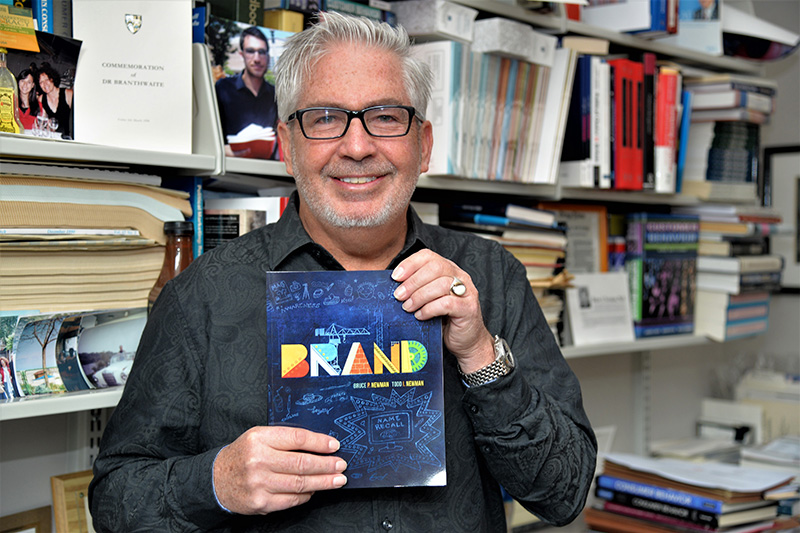 Marketing Professor Bruce Newman
Marketing Professor Bruce NewmanWith President Trump’s reelection campaign underway and more than a dozen candidates vying to be the Democratic standard bearer, the race is on to see whose message resonates most with voters in the 2020 Presidential Election.
In this Q&A, we ask DePaul University Marketing Professor and author Newman, one of the world's leading experts on political marketing and the founding editor-in-chief of the Journal of Political Marketing, to examine the presidential election political marketing landscape.
Why is marketing important for Presidential elections?
Marketing continues to be the most important medium through which a candidate has the best chance of getting elected because of the direct channel of distribution and communication between the candidate and receiver of that information. No longer does a candidate have to get vetted by a political party. They can communicate directly to the voter.
The market for voters has become fragmented in this country and that is the result of the two-party system breaking down and being replaced by issue-oriented groups of citizens that care about particular policies as well by organizations that have vested interests in legislation. As a result, to get a common message across, politicians must make promotional campaigns that appeal to the various needs, wants and values of all these different fragmented groups.
In order to be able to access how to create that promotional and marketing platform and campaign, one needs to do research and that is at the essence of all marketing strategy. The idea that you do research, find out what people want, find out what they need, and in so doing, we strengthen democracy by giving people policy issues candidates that represent leader profiles that people want to care about and look for in office.
What are the new trends in political marketing?
The newest trend is the billionaire. That of course, brings more money into the campaign. It also brings influence to that table. The political party can lose control of the voice of the presidential nominee, as they did with Trump in 2016. Therefore, the issues a party supports reverts to the concerns of the people who are funding the campaign. As more money is being spent, we have the opportunity in marketing to use it in more creative ways, which will create new trends.
Secondly, not a new trend but a growing trend is the speed of information. This is exemplified by using mobile technology to target and communicate directly to individual voters as opposed to having them go to a website to find information. The ability for the average voter to influence other people that they are connected to on Facebook, Instagram and other social media in the palm of their hands changes everything.
The speed at which information is conveyed, digested and reported in the media is the result of a meteoric rise in technology. This creates a crisis management mentality were campaigns are in a constant state of crises. Voters have the ability to get across their thoughts, their feelings, their instantaneous assessments and snapshots of what politicians and candidates are doing as soon as a crisis happens or as issues arise. Candidates need to be able to adapt to the rapid pace.
The final new trend unfortunately is the influence of outside people and organizations, like foreign leaders, who are able to use technology to impact the outcome of our elections. We are an open electoral system, and we have to maintain openness to remain a democracy. The more open we are, the easier it is for an outside influence to penetrate and affect the way we think. This will continue to be a trend in the forthcoming elections.
With a crowded Democratic presidential field (which has been growing weekly), how can a brand stand out from the competition?
That is going to be the million-dollar question. I think it is going to take more than a personality, a platform of issues, a list of promises or a set of policies. It is going to take a refreshing, outside-of-the-box approach that allows a Democrat to maintain connection with their base. The candidate will not be able to deviate from what the public wants and will have to talk about hot-key issues. It is going to force someone to be creative and unique, the way that Trump was in 2016. It also won't be just be a candidate saying they want to be president; it will be a candidate announcing who their vice president selection will be. This will immediately define their brand in a way that lets people know what sets them apart from the competition.
What marketing trends do you think we will see in the next Presidential election in 2020?
I think we are going to see a lot of negative advertising in a way we haven't seen it before. We are going to see a lot more money being spent, and we are going to see more new faces come into the political sphere because they bring to the table the money that is needed to run the marketing campaign.
We are going to see more creative ways in which candidates are able to get their message across. I think we will all be surprised by what technology candidates will be using. We are also going to see more attention being paid to the notion that was developed back in ’92 when Clinton ran the “war room” mentality that you immediately strike back as soon as your opponent says something about you. There will be a quicker response to an accusation that comes from the opponent. Lastly, we should plan to see the unexpected. I can't tell you what that is going to be, but expect the unexpected.